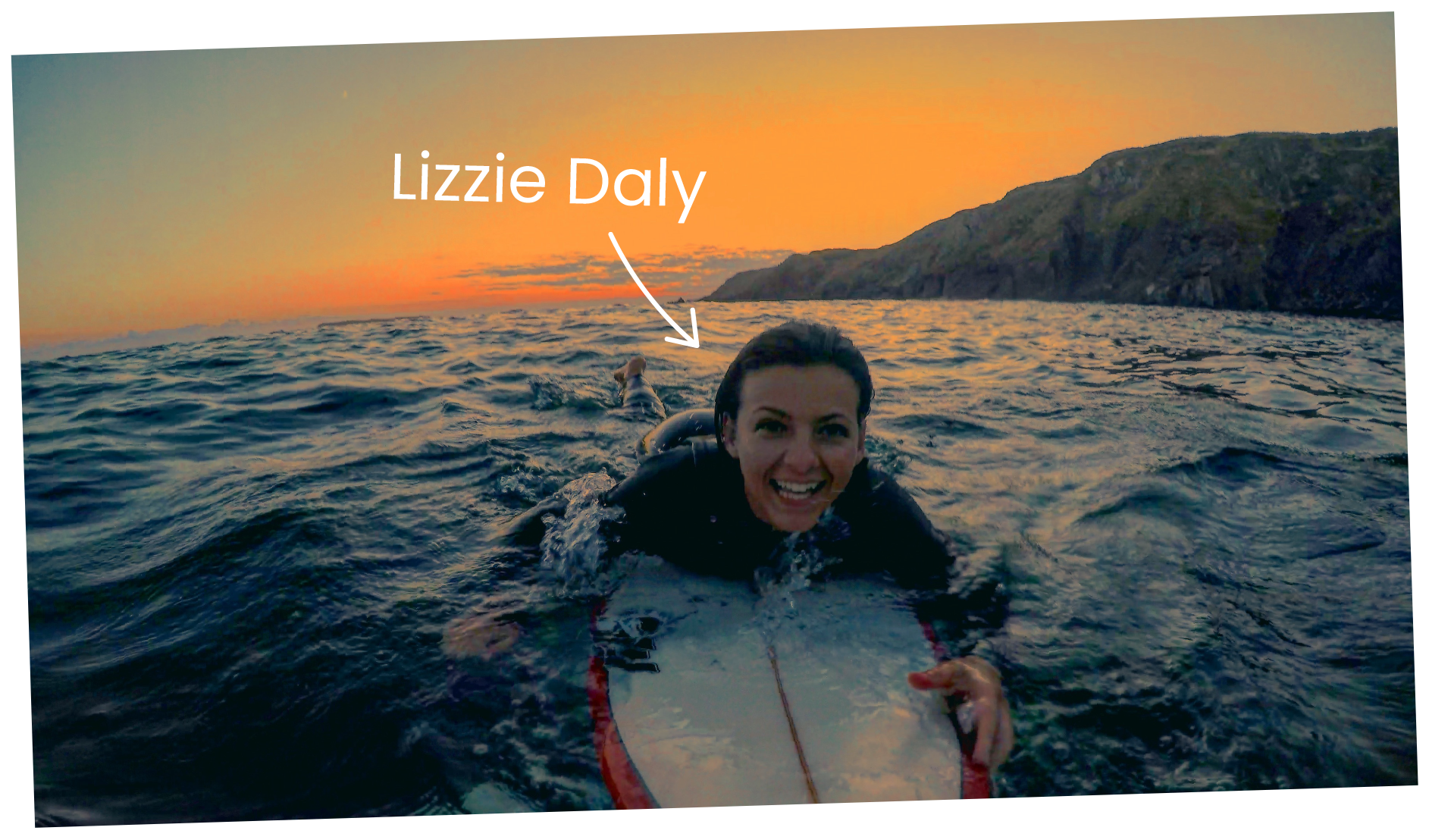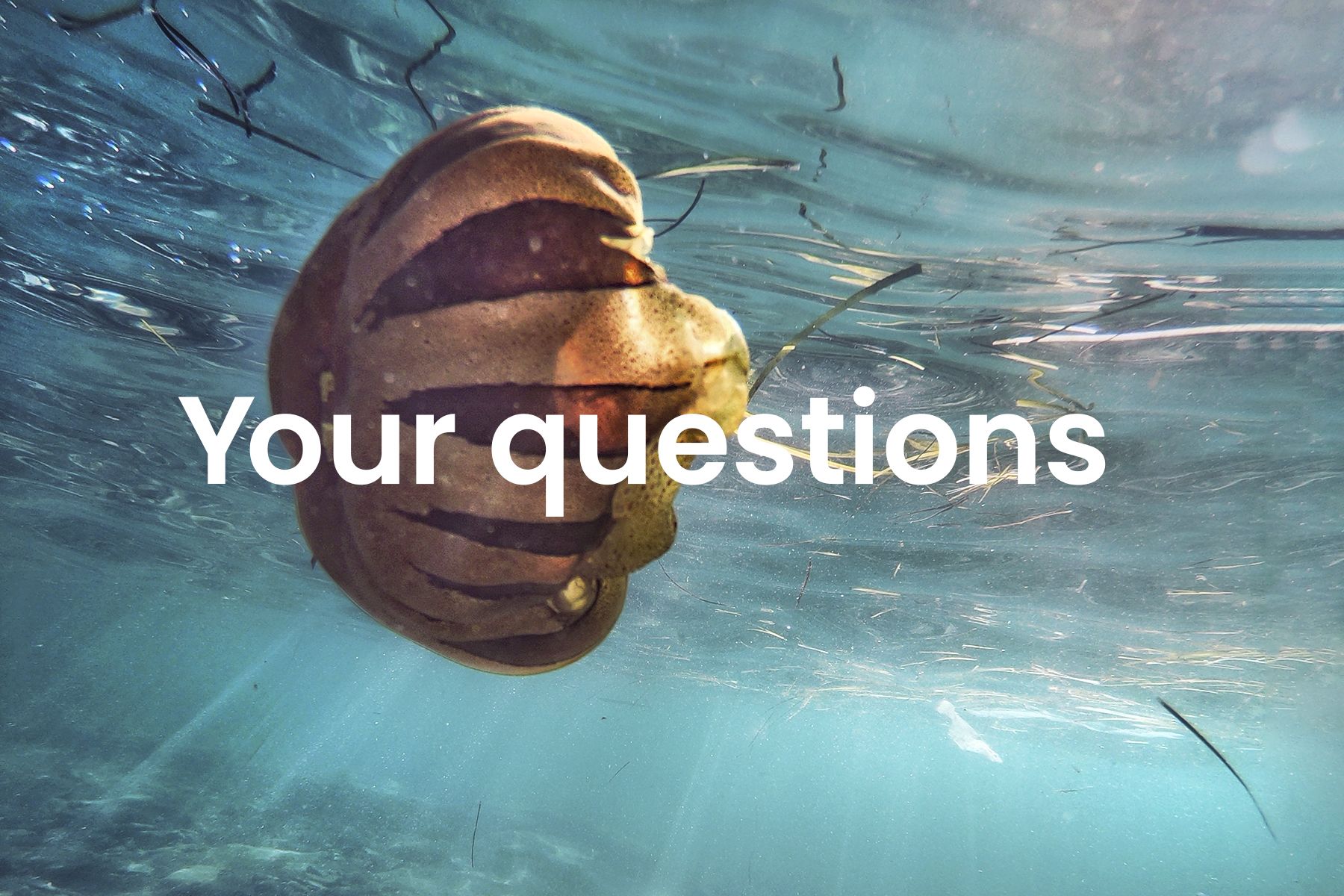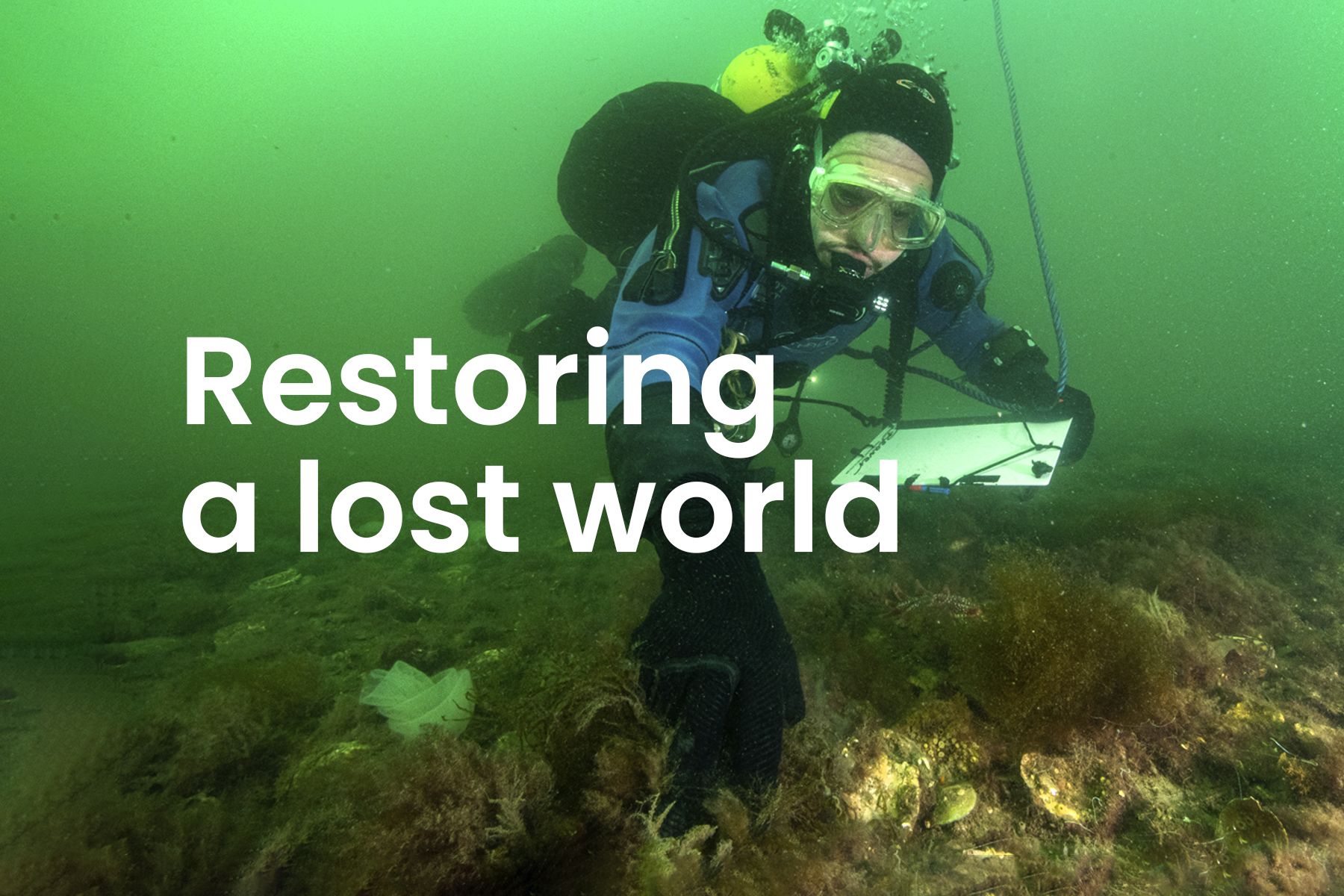
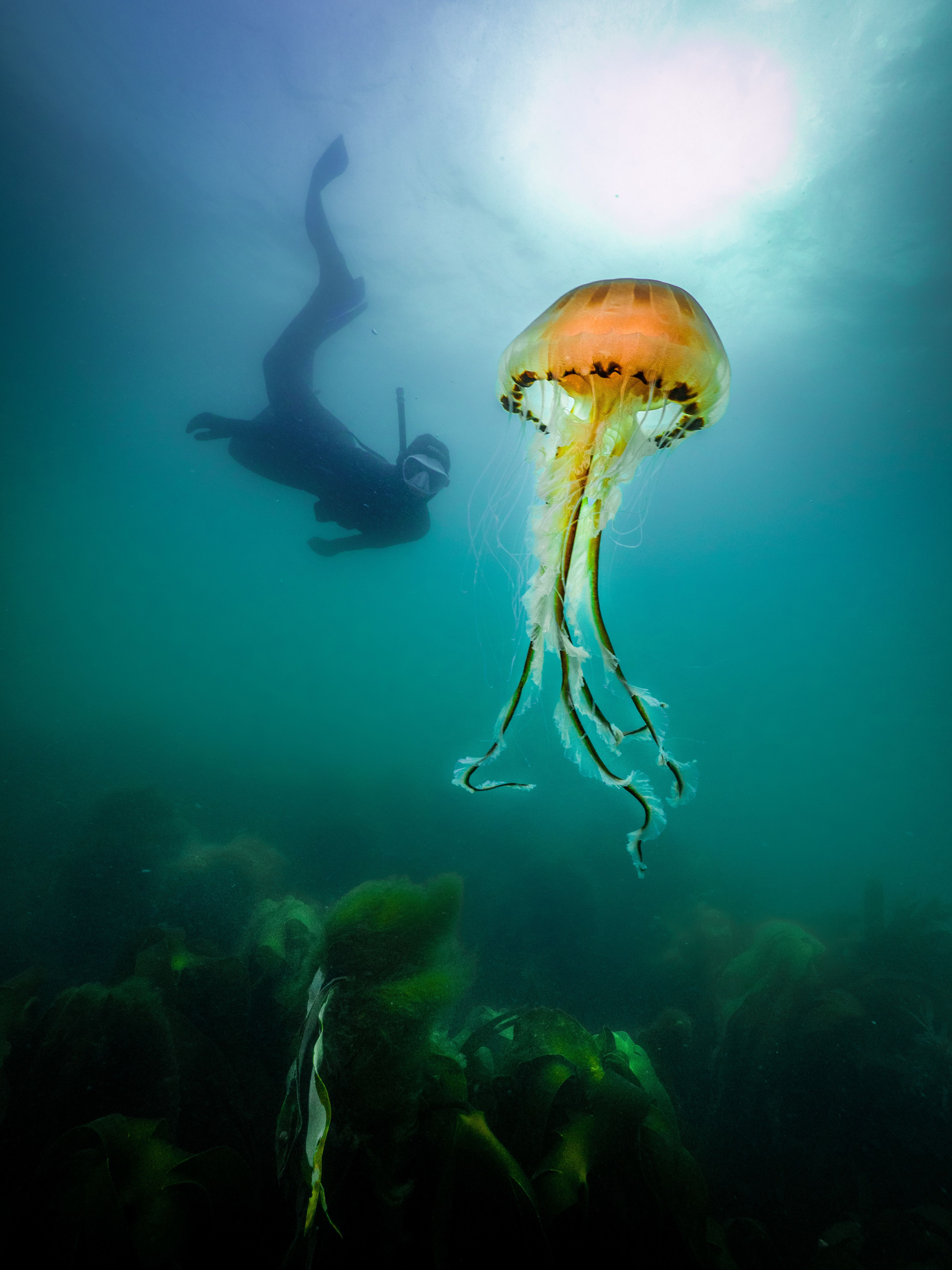

Sea Champion Eleanor Goodman spotted a spiny starfish
“Following the steady retreat of the tide at Wembury, there is magic to be found! The pools hold so much life, so much wonder. They offer a sanctuary for marine wildlife, and are the perfect spot for a keen-eyed rockpooler to explore.”
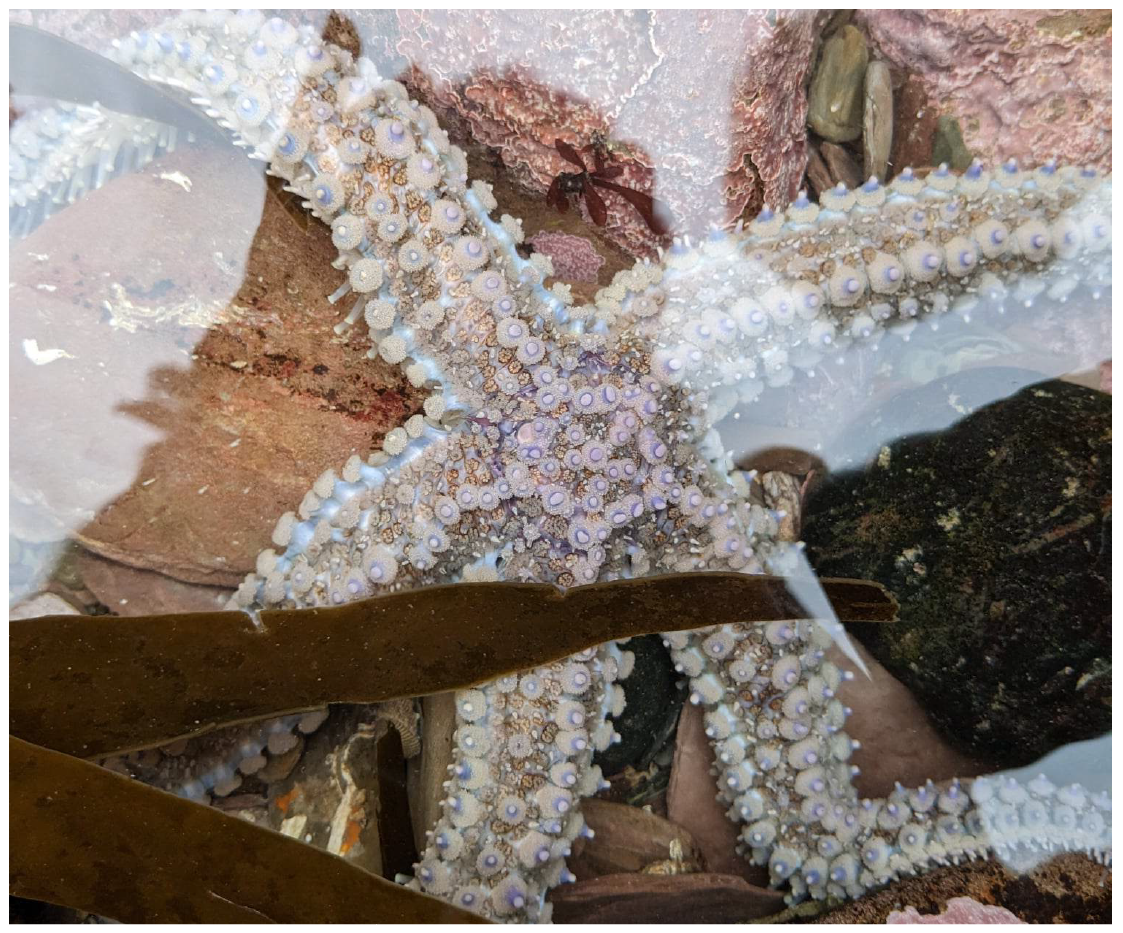


Amelia de Silva, 9, spotted mermaid’s purses
“I was hunting for ages for mermaid’s purses and two turned up, washed up on the sand.”

Sea Champion Eleanor Goodman spotted a spiny starfish

“Following the steady retreat of the tide at Wembury, there is magic to be found! The pools hold so much life, so much wonder. They offer a sanctuary for marine wildlife, and are the perfect spot for a keen-eyed rockpooler to explore.”

Amelia de Silva, 9, spotted mermaid’s purses

“I was hunting for ages for mermaid’s purses and two turned up, washed up on the sand.”

Lizzie Daly’s most memorable recent sighting
“I saw three species of shark in one day which was mind-blowing: a thresher shark jumping out the water, a porbeagle shark and blue sharks off the coast of Wales. I feel really lucky to have seen them.”
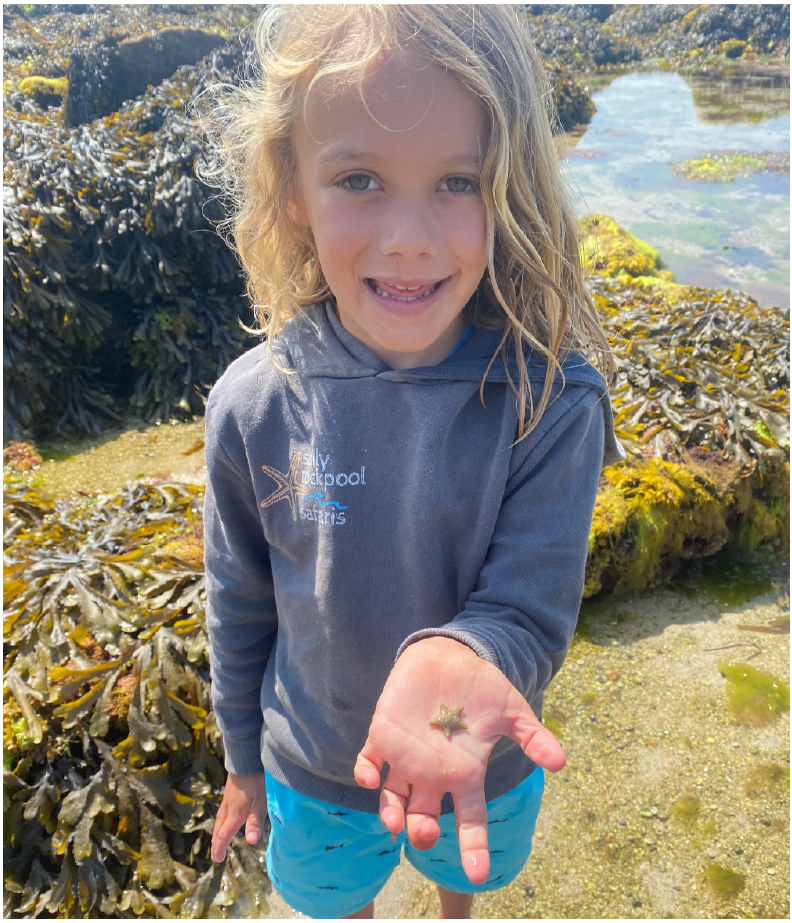

Orkney Reid, 8, spotted a cushion star
Orkney is our Young Ocean Optimist Award runner-up. His three rockpooling tips for others are: “Be patient – it might look like there isn’t much there, but there will always be something. Look under rocks and weeds, and always leave everything the way you found it – it is their home. Always keep an eye on the tide – it comes in really quickly!”

Orkney Reid, 8, spotted a cushion star

Orkney is our Young Ocean Optimist Award runner-up. His three rockpooling tips for others are: “Be patient – it might look like there isn’t much there, but there will always be something. Look under rocks and weeds, and always leave everything the way you found it – it is their home. Always keep an eye on the tide – it comes in really quickly!”

Libby Keatley spotted a new species of nudibranch
Seasearch volunteer and Northern Ireland Coordinator Libby Keatley made an unexpected discovery while on a Seasearch survey dive. “I was looking at other animals attached to some boulders and cobbles on the seabed when I spotted a nudibranch. It was a bit different to any I had seen before, either in real life or in guides.. I didn’t think I would ever find anything so exciting. It just shows how important it is to always keep your eyes peeled. I actually deliberated for a while before calling over a nudibranch expert from the team as I didn’t want to make a big deal out of nothing. But I am very glad now that I did.
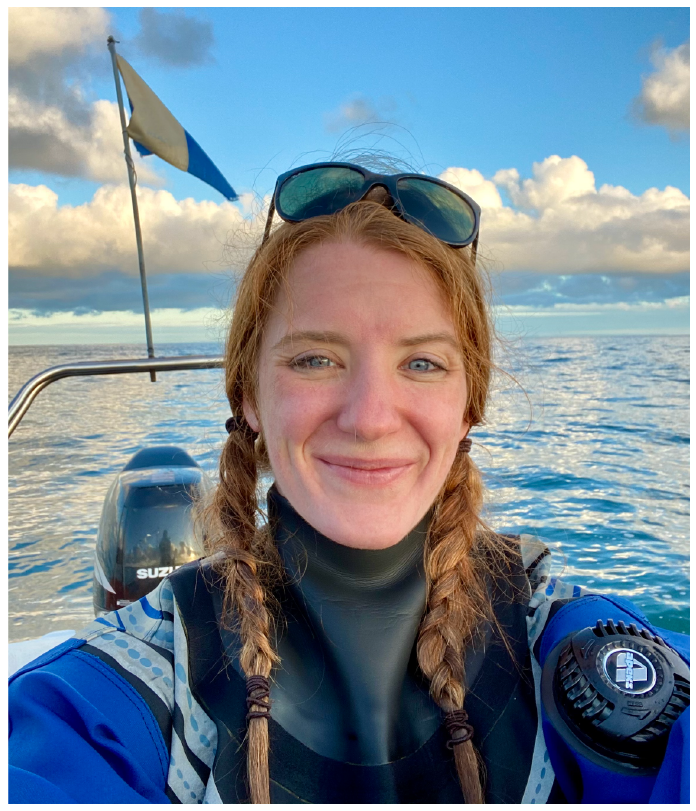

Libby Keatley spotted a new species of nudibranch

Seasearch volunteer and Northern Ireland Coordinator Libby Keatley made an unexpected discovery while on a Seasearch survey dive. “I was looking at other animals attached to some boulders and cobbles on the seabed when I spotted a nudibranch. It was a bit different to any I had seen before, either in real life or in guides.. I didn’t think I would ever find anything so exciting. It just shows how important it is to always keep your eyes peeled. I actually deliberated for a while before calling over a nudibranch expert from the team as I didn’t want to make a big deal out of nothing. But I am very glad now that I did.
The nudibranch was named after Libby Keatley: Dendronotus keatleyae
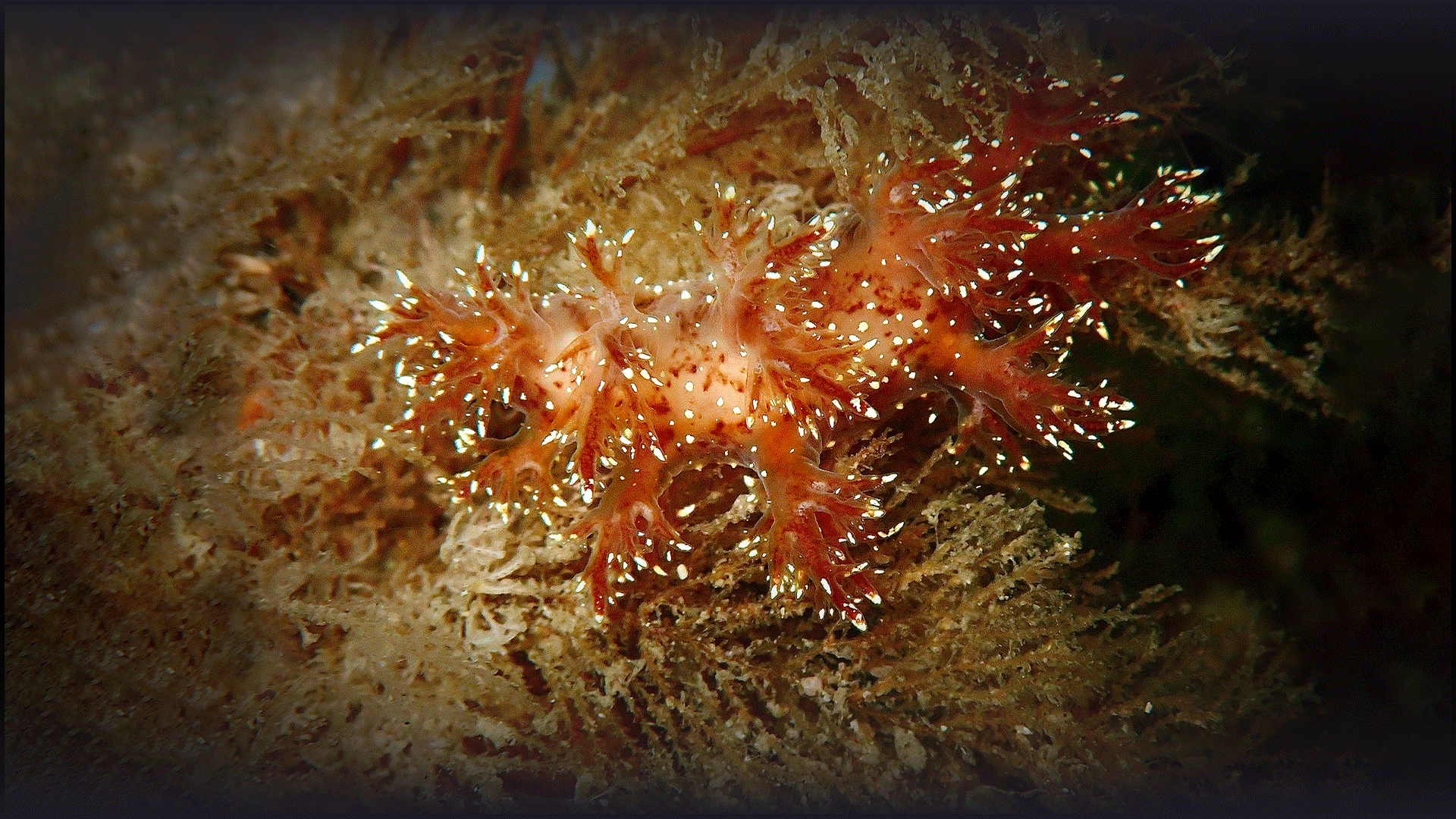

“Once a sample had been collected, the nudibranch was taken to the Queen’s University Belfast Marine Laboratory where it was sent off for DNA sequencing. When the results were returned, it was shown to be a species of Dendronotus that was not yet described. The findings were shared with other marine biologists around the world who were already doing work on this genus, and on 1 April 2023, Korshunova et al. published a paper describing this new species.
“I was informed that the authors had officially named the new species Dendronotus keatleyae – I was absolutely over the moon when I found out. It’s a real honour, especially when you are a mega nudibranch fan like me. And, yes, I was reassured that it definitely wasn’t an April Fool!
“It’s also a wonderful example of how citizen science projects like Seasearch can work with marine biologists and world experts in order to better understand the biodiversity that we have here.”
“Once a sample had been collected, the nudibranch was taken to the Queen’s University Belfast Marine Laboratory where it was sent off for DNA sequencing. When the results were returned it was shown to be a species of Dendronotus that was not yet described. The findings were shared with other marine biologists around the world who were already doing work on this genus, and on 1 April 2023, Korshunova et al. published a paper describing this new species.

“I was informed that the authors had officially named the new species Dendronotus keatleyae – I was absolutely over the moon when I found out. It’s a real honour, especially when you are a mega nudibranch fan like me. And, yes, I was reassured that it definitely wasn’t an April Fool!
“It’s also a wonderful example of how citizen science projects like Seasearch can work with marine biologists and world experts in order to better understand the biodiversity that we have here.”
Welcome to jellyfish season!
Biologist, wildlife presenter and filmmaker Lizzie Daly is supporting the Great British Jellywatch Weekend on 12th-13th August, where we ask you to take part in the UK’s largest jellyfish survey.
“Wildlife sightings are incredibly important. Citizen science has opened up a world where you can have a project with hundreds of thousands of people, and they’re all able to give significant data that would be impossible to get otherwise. So, the more eyes the better. I also think it feels really empowering to be part of a community. You’re not just there seeing something and just walking on by, you’re actually giving back to science, which is a really cool thing,” says Lizzie.
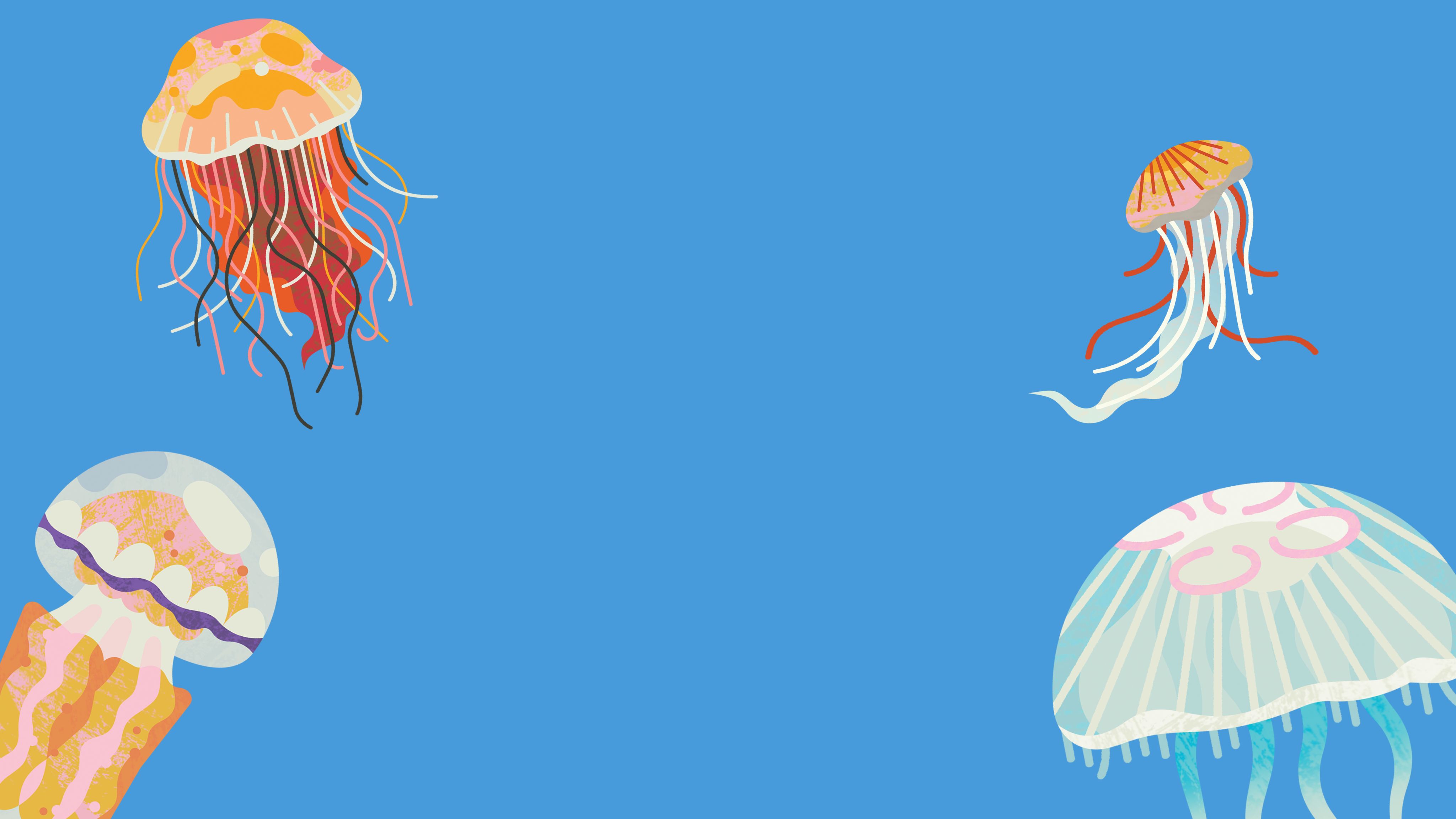
Biologist, wildlife presenter and filmmaker Lizzie Daly is supporting the Great British Jellywatch Weekend on 12th-13th August, where we ask you to take part in the UK’s largest jellyfish survey.
“Wildlife sightings are incredibly important. Citizen science has opened up a world where you can have a project with hundreds of thousands of people, and they’re all able to give significant data that would be impossible to get otherwise. So, the more eyes the better. I also think it feels really empowering to be part of a community. You’re not just there seeing something and just walking on by, you’re actually giving back to science, which is a really cool thing,” says Lizzie.

Laura McConnell spotted some moon jellyfish
“My partner and I are avid snorkellers/freedivers and underwater photographers and are in the ocean as much as we can be. While collecting data for my MSc dissertation at Seaview on the Isle of Wight in May, we saw two or three moon jellyfish. Moon jellyfish are normally the first jellyfish to bloom each year so are the first to make their way into the waters surrounding the island’s coast. They’re likely one of the most abundant and widespread species in UK waters. As the days get longer and the seas get warmer, we expect to see more of this species as well as some of the others such as compass jellyfish.”
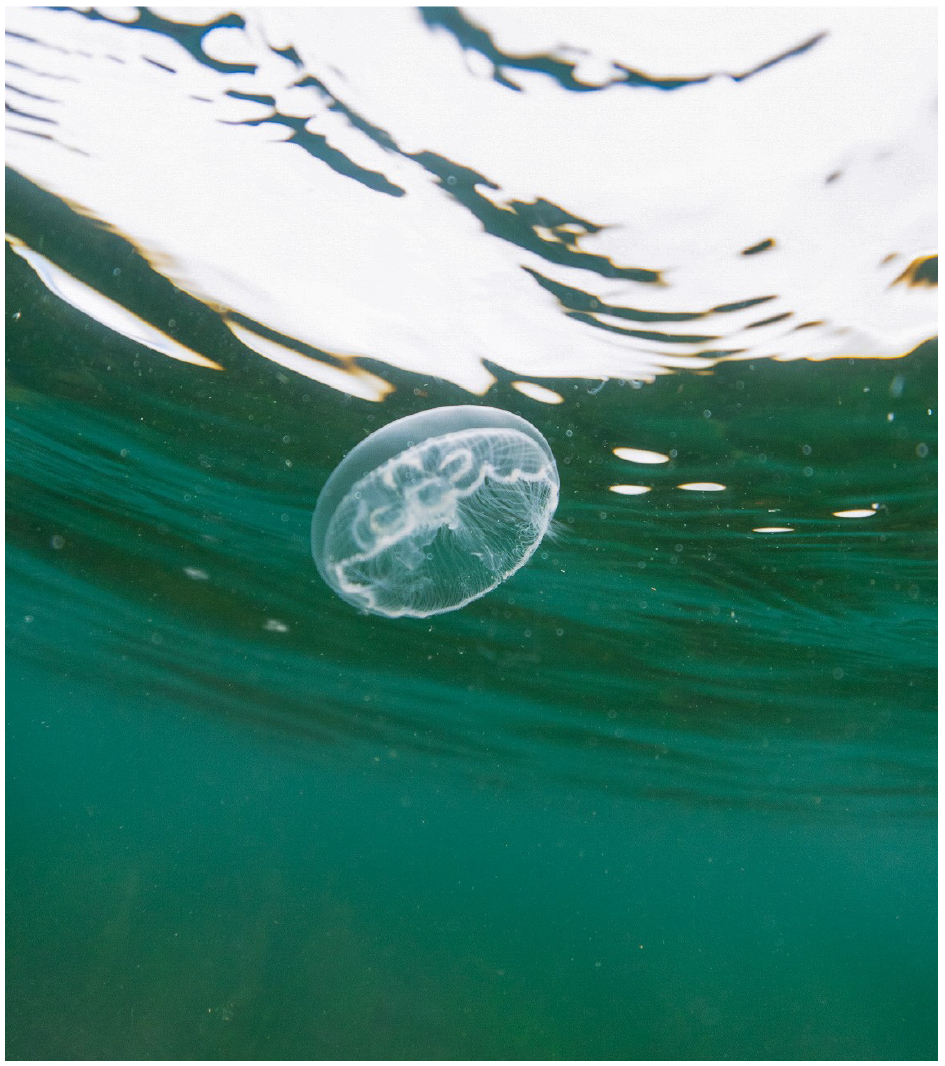

Laura McConnell spotted some moon jellyfish

“My partner and I are avid snorkellers/freedivers and underwater photographers and are in the ocean as much as we can be. While collecting data for my MSc dissertation at Seaview on the Isle of Wight in May, we saw two or three moon jellyfish. Moon jellyfish are normally the first jellyfish to bloom each year so are the first to make their way into the waters surrounding the island’s coast. They’re likely one of the most abundant and widespread species in UK waters. As the days get longer and the seas get warmer, we expect to see more of this species as well as some of the others such as compass jellyfish.”
“I adore the vibrant blues in a blue jellyfish”
Filmed by Lizzie Daly in North Wales, June 2023


Richie, Josh and Vedika spotted a barrel jellyfish
“We were having a day on the beach and saw lots of barrel jellyfish on the sand. We were surprised how big they were.”
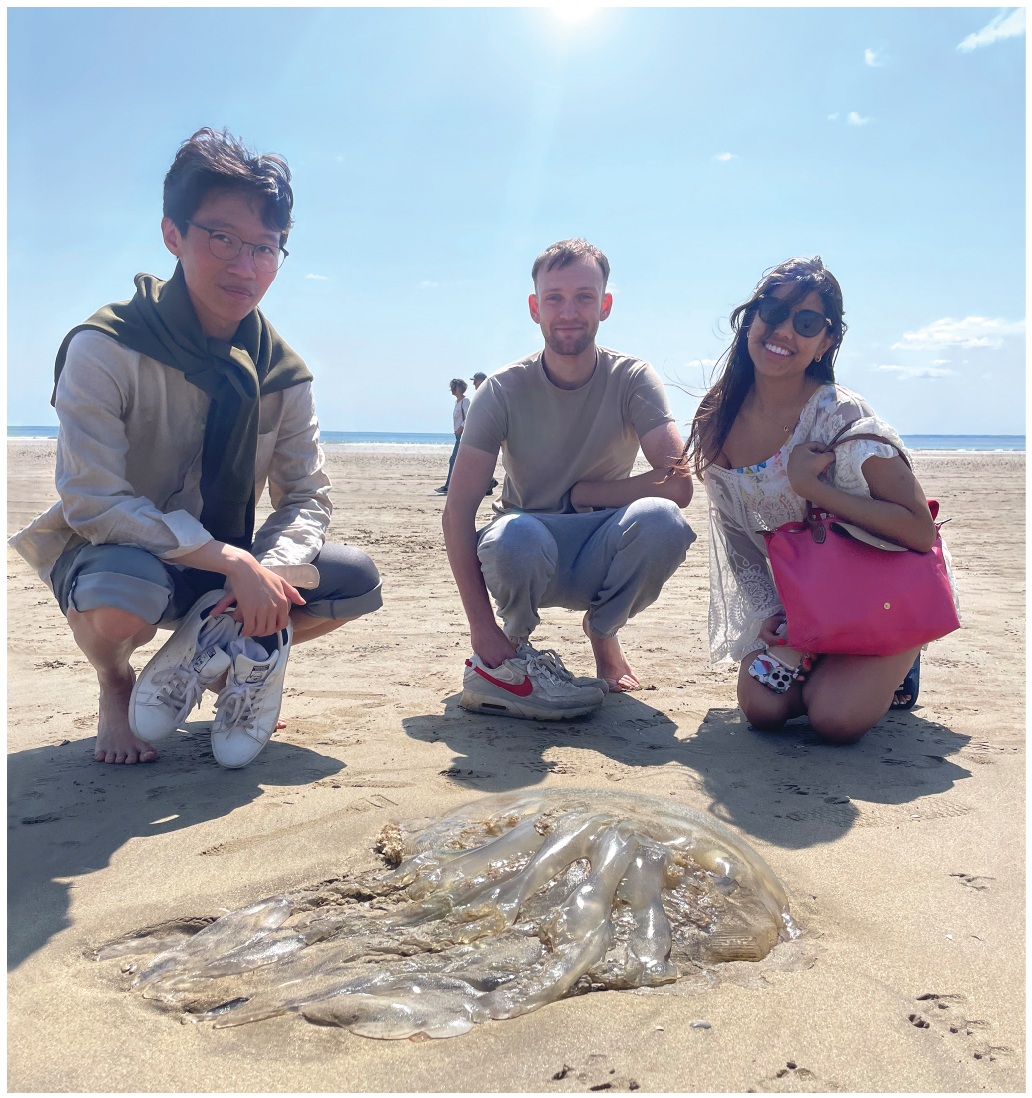
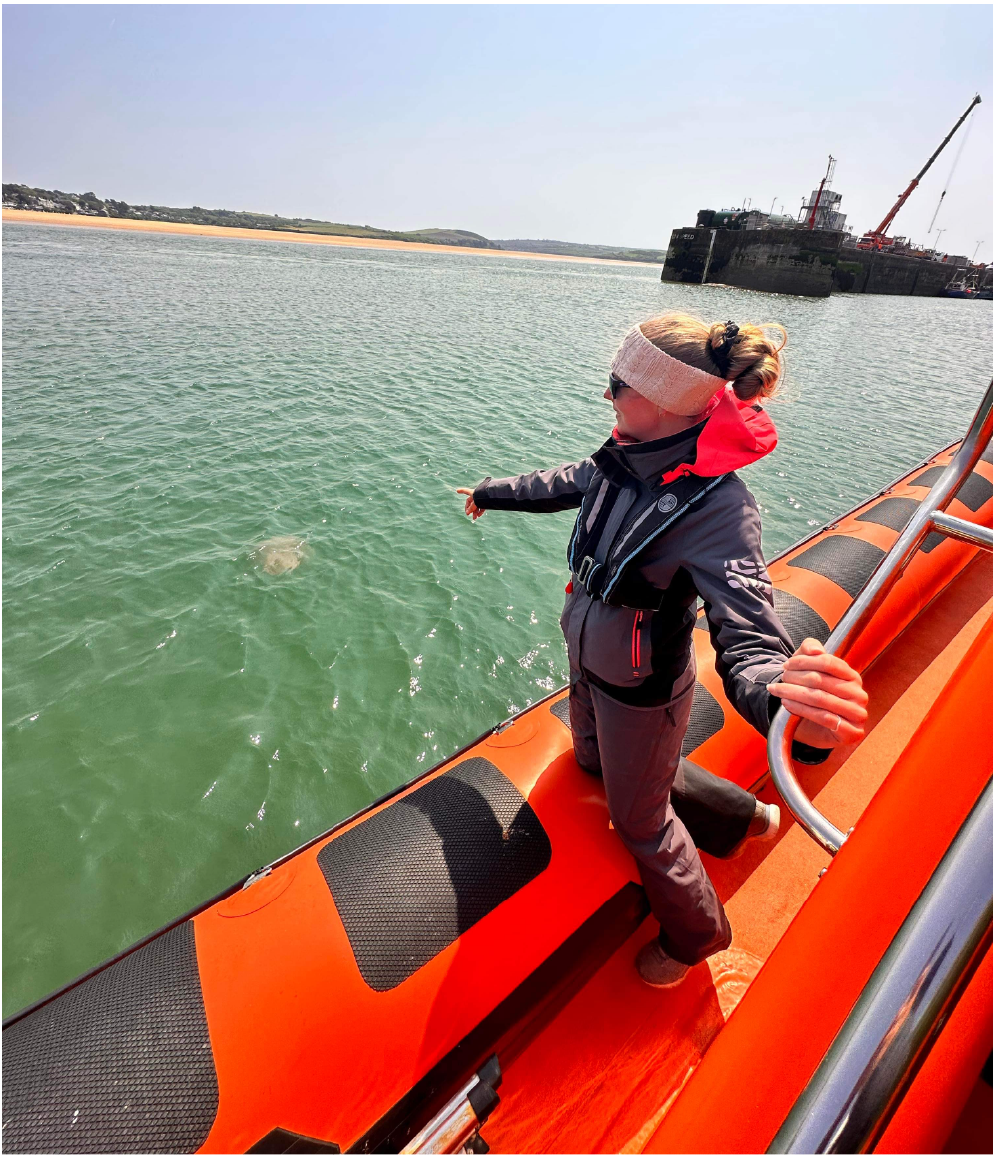

Vicki Hall spotted a barrel jellyfish
Vicki is a guide with Padstow Padstow Sealife Safaris: “This is one of the many barrel jellyfish we’ve been lucky enough to spot on our trips recently. This one was in the harbour in Padstow and came right alongside the boat! I record all the jellyfish we come across through the Marine Conservation Society’s form on its website, as any data collected about jellyfish is incredibly valuable. As I’m lucky to spend a lot of time out on the water, I like to contribute to important citizen science projects including ones run through the Marine Conservation Society.”

Richie, Josh and Vedika spotted a barrel jellyfish

“We were having a day on the beach and saw lots of barrel jellyfish on the sand. We were surprised how big they were.”

Vicki Hall spotted a barrel jellyfish

Vicki is a guide with Padstow Padstow Sealife Safaris: “This is one of the many barrel jellyfish we’ve been lucky enough to spot on our trips recently. This one was in the harbour in Padstow and came right alongside the boat! I record all the jellyfish we come across through the Marine Conservation Society’s form on its website, as any data collected about jellyfish is incredibly valuable. As I’m lucky to spend a lot of time out on the water, I like to contribute to important citizen science projects including ones run through the Marine Conservation Society.”
Why jellyfish are awesome

Lizzie says: “I think it’s their diversity that really catches my attention. After finding a giant barrel jellyfish while diving off the coast of Falmouth in 2019, I was really amazed at how deliberate they are and how they move. They move up and down water columns, travelling huge distances to search for food. I adore the vibrant blues in a blue jellyfish and the wonderful stripes down a compass, but I love the barrel just because it’s so enormous.
“There’s perhaps a lot of fear around jellyfish and their venom and stings. But my encounters with barrel jellyfish have been peaceful and tranquil because they’re so impressive, and you can just float along with them.
“Jellyfish are incredibly important for food for certain species of turtle like the leatherback, but they also help with nutrient cycling in the ocean, transporting nutrients over huge distances which then get recycled as they’re eaten by other species. So yes, they’re awesome.”
Lizzie’s top tips for what to spot this summer
- There’s so much amazing wildlife living around our coasts. You can see wonderful seabird colonies such as puffins, razorbills, guillemots and northern gannets in places like Bass Rock in Scotland and Grassholm Island in Wales.
- It’s easy to just see something, take a picture, and then just walk away. But if you have an interesting encounter with an animal or see something different, then you spend a bit more time with it, so can see more. There are things that I’ve noticed because of just taking my time. Write down some observations about the animal’s appearance, or its form, or behaviour. For example, if you see a guillemot with its eggs, how does it behave in response to a predator such as a great black-backed gull? So, observe and immerse yourself.
- We also have some really incredible honeycomb worm reefs, which are great to see. I think a lot of people don’t realise that we actually have our own coastal reefs built by tube-like worms from sand. At high tide, if you look underwater, you can see the honeycomb worms using these reefs to feed, or at low tide you can just have a good close look at the reefs. One of my favourite places to go searching for them, as well as fossils, is on Southerndown Beach in South Wales.
- And keep an eye out for spider crabs. As it heads to late summer, they begin their moult, so you’ll find huge mounds of spider crab shells.
- There are some great snorkelling spots down in Cornwall where conditions are calm. You can get some really clear visibility and see things like wrasse, snakelocks anemones and small-spotted catsharks quite easily. The other impressive thing is, of course, seasonal visitors such as blue sharks and basking sharks that migrate to UK waters to feed.
- If there’s a storm, particularly in early autumn, you get the most spectacular number of mermaid’s purses (shark and ray egg cases) at high tide.
- I’ve seen loads of nudibranchs in Falmouth, Cornwall, too. They just cling on to the edge of rocks and kelp and you’ll see them slowly moving and feeding.
- And, obviously, in the summer, jellyfish start to bloom. In late summer you can see bigger blooms with the warmer waters. Look out for barrel jellyfish, moon jellyfish, blue and compass jellyfish. The west coast (South Wales and Cornwall) is a really good place to spot them, as they travel across the Atlantic and the Irish Sea and onto our coastline.
Visit our website to report your jellyfish sighting. Jellyfish are important indicators of change in our seas and we use this data to monitor the health of the ocean.

